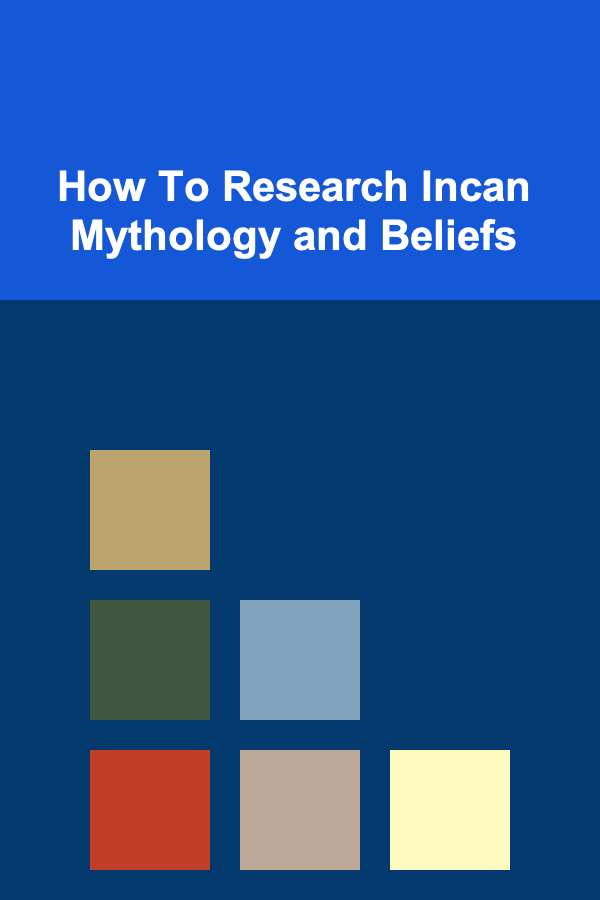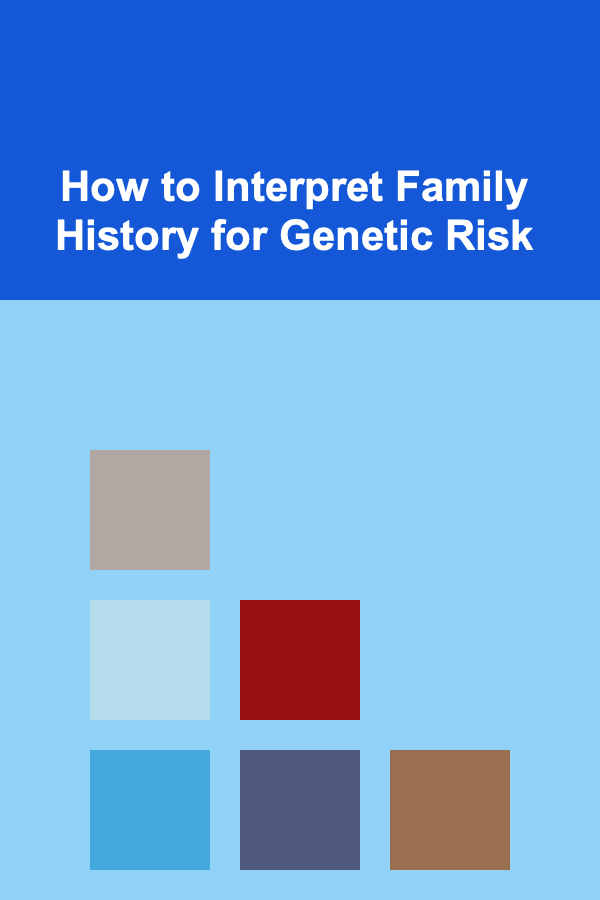
How To Research Incan Mythology and Beliefs
ebook include PDF & Audio bundle (Micro Guide)
$12.99$8.99
Limited Time Offer! Order within the next:

Incan mythology is a rich and complex system of beliefs that was at the heart of the ancient Inca civilization, which thrived in South America from the 15th to the 16th century. The Inca Empire, which spanned from present-day Chile to Colombia, left behind a rich legacy of myths, gods, rituals, and stories that were central to their religious and cultural practices. Researching Incan mythology and beliefs requires a multidisciplinary approach, drawing from archaeology, anthropology, history, and the study of indigenous oral traditions. This article provides a comprehensive guide to conducting research on Incan mythology and beliefs, exploring key strategies, sources, and methodologies.
Understand the Historical Context of the Inca Civilization
Before delving into the specifics of Incan mythology, it is essential to understand the historical and cultural context in which these beliefs developed. The Inca Empire, with its capital at Cusco, was one of the largest and most sophisticated empires in pre-Columbian America. The Inca people were highly organized and had a well-established social, political, and religious system. Their religion and mythology were deeply intertwined with their daily lives, guiding their understanding of the world and their relationship to nature, the cosmos, and the divine.
1.1 The Role of Religion in Incan Society
Religion played a central role in the Inca Empire. The Inca rulers were considered to be the "children of the sun," and they governed with the divine right granted to them by their gods. The Sun God, Inti, was the most revered deity in Incan religion, but the pantheon included numerous other gods and spirits, each representing different aspects of nature, life, and death. The Inca people believed that their gods governed the natural world and that maintaining harmony with the gods was essential for ensuring agricultural prosperity, social stability, and success in warfare.
Incan religious practices included a wide array of rituals, sacrifices, and offerings. Temples, shrines, and sacred places were constructed to honor the gods, and festivals were held throughout the year to mark important agricultural events or to invoke the gods' favor. The Inca also practiced ancestor worship, and many of their rituals were designed to honor their deceased rulers and protectors.
1.2 The Role of Myths in Incan Culture
Myths were an essential part of Incan culture, providing explanations for natural phenomena, the origin of the world, the creation of the first humans, and the relationships between humans and the divine. These stories were passed down orally, often performed by priests, storytellers, and shamans in sacred spaces. The myths were closely linked to Incan rituals, and they provided a moral and spiritual framework for the Incan people.
Incan myths were also used to explain historical events and the rise of the Inca Empire. For instance, the story of the creation of the world and the emergence of the first Incan rulers is a central myth in Incan belief. Understanding these myths is crucial to understanding the broader worldview of the Inca civilization.
Key Themes in Incan Mythology
Incan mythology is characterized by several recurring themes and motifs. These include the creation of the world, the relationship between humans and the gods, the role of nature in religious life, and the concept of duality. The following are some of the key themes that dominate Incan mythology and beliefs.
2.1 Creation Myths
The Inca people had several creation myths that explained the origins of the world, the first humans, and the gods. One of the most important creation myths in Incan culture is the story of Viracocha, the creator god. According to the myth, Viracocha emerged from Lake Titicaca and created the sun, moon, stars, and the first humans. He is often depicted as a bearded, powerful figure who traveled across the land, teaching people how to live and establishing the foundations of civilization.
Another creation myth involves the emergence of the first Inca ruler, Manco Cápac, and his sister-wife, Mama Ocllo, who were said to have been sent by the sun god, Inti, to bring civilization to the world. This myth underscores the divine right of the Inca rulers, positioning them as direct descendants of the gods.
2.2 The Sun God (Inti) and Solar Worship
The sun god, Inti, was the most important deity in the Incan pantheon. Inti was believed to be the source of all life and the guardian of the Inca people. The emperor, or Sapa Inca, was considered the "Son of the Sun" and was believed to have a special connection to the divine. Inti's role in Incan religion was not just symbolic but practical, as the Inca relied on solar patterns to guide their agricultural practices, which were critical to their survival.
2.3 Duality in Incan Beliefs
Duality was a fundamental concept in Incan mythology. Many gods and goddesses had complementary pairs, representing opposing forces that needed to be balanced. For example, the god Pachamama (Mother Earth) was paired with Pachacamac (a creator god associated with the earth). The Inca believed that harmony in the world was achieved through the balance of these forces, and rituals often focused on restoring balance when it was disrupted.
Duality was also present in the Inca's understanding of time, seasons, and space. The Inca calendar was divided into two cycles: one for agricultural planting and harvesting, and another for social and political events. These cycles reflected the balance between nature and human society.
2.4 Ancestor Worship and the Afterlife
Incan religion also placed great importance on ancestor worship. The spirits of deceased rulers and ancestors were believed to have the power to influence the living, and rituals were performed to honor them. The mummification of the dead was a common practice for Inca elites, and mummies were often kept in temples or royal tombs to be revered as sacred figures.
The Inca believed in a complex afterlife, with different realms for different types of souls. The most revered souls, such as those of emperors, were believed to join the gods in a paradise, while other souls journeyed to the underworld or other spiritual realms.
2.5 Nature and Animal Spirits
Incan mythology is deeply rooted in the natural world. Many of the gods and spirits were associated with natural elements, such as mountains, rivers, and animals. For example, the god Illapa was the god of rain and storms, and the mountains were believed to be the home of powerful spirits that influenced human fate. Animals, especially those that were important to the Inca economy, such as llamas and condors, were also seen as sacred creatures with spiritual significance.
Primary Sources for Researching Incan Mythology
Researching Incan mythology requires the study of various primary sources. Since the Inca did not have a written language, much of what is known about their beliefs has been passed down through oral traditions and later recorded by Spanish chroniclers after the Spanish conquest. However, there are also some archaeological remains, such as ancient temples and sacred sites, that provide important insights into Incan religious practices. Here are some key sources for researching Incan mythology:
3.1 Spanish Chronicles and Early Accounts
One of the primary sources for understanding Incan mythology comes from the accounts of Spanish chroniclers who arrived in the Americas in the 16th century. Some of the most notable works include:
- "The Royal Commentaries of the Inca" by Garcilaso de la Vega: A mestizo historian of Incan descent, Garcilaso de la Vega provides valuable insight into the Inca's customs, religion, and mythology, based on oral traditions and his own experiences.
- "The First New Chronicle and Good Government" by Felipe Guaman Poma de Ayala: This work provides an extensive look at Incan society, culture, and beliefs, including depictions of Incan gods and rituals.
- "History of the Incas" by Pedro Cieza de León: Cieza's account is one of the most comprehensive written histories of the Inca Empire, and it includes details on the Inca gods and their religious practices.
While these sources were written from a European perspective, they offer critical insights into Incan mythology, often blending indigenous beliefs with the Spanish writers' interpretations.
3.2 Oral Traditions and Mythical Narratives
Incan myths were primarily transmitted orally, and many of these narratives were passed down through generations of storytellers. Indigenous people in Peru, Ecuador, and Bolivia, who are descendants of the Inca, continue to preserve and share these stories through oral tradition. Consulting contemporary indigenous sources and conducting interviews with elders and shamans can provide a direct connection to the living traditions of Incan mythology.
3.3 Archaeological Sites and Artifacts
Archaeological sites, such as Machu Picchu, Sacsayhuamán, and Ollantaytambo, are rich in evidence of Incan religious practices. Temples, altars, and sacred spaces, along with the artifacts found at these sites, offer important clues about Incan beliefs and rituals. The iconography found in Incan art, such as depictions of gods, animals, and natural symbols, also provides valuable insights into their religious worldview.
Methods for Studying Incan Mythology
To conduct effective research on Incan mythology and beliefs, it is important to employ a variety of research methods. The following strategies can help researchers gain a deeper understanding of Incan religious practices and their mythology:
4.1 Cross-Disciplinary Approaches
Since Incan mythology spans multiple aspects of culture, including religion, politics, and society, a cross-disciplinary approach is essential. Researchers should draw from archaeology, anthropology, history, and religious studies to develop a comprehensive understanding of Incan beliefs. This approach can help contextualize the myths within the broader cultural and historical framework of the Inca civilization.
4.2 Fieldwork and Ethnography
Fieldwork in regions that were once part of the Inca Empire, particularly in the Andean highlands, can provide valuable insights into the living traditions of Incan descendants. Ethnographic studies that involve observing and interacting with local communities can shed light on how Incan myths and rituals are still practiced today.
4.3 Comparative Mythology
Comparative mythology involves comparing Incan myths with those of other ancient cultures, particularly other civilizations in the Andean region, such as the Moche, Nazca, and Tiwanaku. By identifying common themes and motifs across different mythologies, researchers can gain a deeper understanding of the shared cultural heritage of the Andean peoples.
Conclusion
Researching Incan mythology and beliefs is a complex but fascinating endeavor that requires a multi-faceted approach. By understanding the historical context of the Inca Empire, exploring key themes in their mythology, and utilizing a range of primary sources and research methods, researchers can uncover the rich spiritual and cultural heritage of this ancient civilization. Through continued study and collaboration with indigenous communities, we can ensure that the myths and beliefs of the Inca people are preserved and understood for future generations.
Other Products

How to Create a Checklist for Building Your Brand Voice and Style
Read More
How to Interpret Family History for Genetic Risk
Read More
How to Keep Track of Expenses in Your Rental Property
Read More
How to Set Up a Family Homework Station in Your Living Space
Read More
How to Track Your Spending Effectively Without Stress
Read More